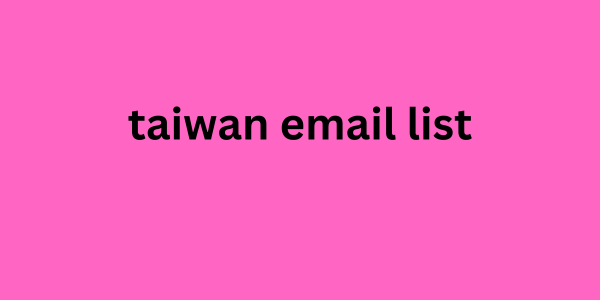A potential buyer is not at all inclined to solve a puzzle of lines, letters and symbols. He simply does not have time for this. The meaning put into the logo by the company should be clear at first taiwan email list glance. The principle here is: the simpler, the better. This is the logo that is easiest to remember.
Uniqueness . First of all, a logo is necessary so that your company does not get lost among many others. This means that you will first have to conduct a small market research, paying attention to the symbols and color scheme used by competitors. Your task is to note both successful and unsuccessful solutions, and only then you can create a high-quality version of your own.

To check the uniqueness of a logo, it is convenient to use special services (for example, TinEye). If something raises doubts, it is better to make changes at the very beginning than to find out later that your logo completely or partially repeats existing trademarks. Relevance . Of course, the logo should look modern, but you shouldn’t test all the latest trends on it.
Your task is to create a sign that will remain functional for at least 10 years. If you rebrand (and, accordingly, change the logo) before this period, the company runs the risk of ceasing to be recognizable among consumers. The most successful brands at one time developed logos that have not undergone significant changes for years, or even decades.
Thanks to this, their audience has developed stable associations that contribute to the best memorization. For example, the Apple symbol has remained virtually unchanged for many years – and, as a result, it is one of the most recognizable in the world. Associativity . When creating an organization's logo, it is necessary to take into account the specifics of its activities.
Usually, it is conveyed using a certain color palette and graphics. In the minds of consumers, there are already established associations. For example, the image of a cross (usually green) indicates that we are looking at a pharmacy. The same association will arise when looking at a snake and a cup - a symbol of medicine.
When developing your logo, you can (and even should!) show creativity, but not at the expense of recognition. Related article: 10 rules for creating a logo . Elements of a functional logo Creating an organization logo that fully meets all functional requirements consists of several mandatory steps: goal setting; choosing the right type; harmonious combination of components; universality test.
Goal setting First of all, it is necessary to determine the main task that the logo will perform, formulate the purpose of its creation. To do this, we recommend answering the following questions: What are the main features of your company (field of activity, market niche, mission, plans for the future, etc.)? Who are your clients (approximate portrait of a potential buyer)? What image of the company should your logo convey? This is about metaphor.to breathe